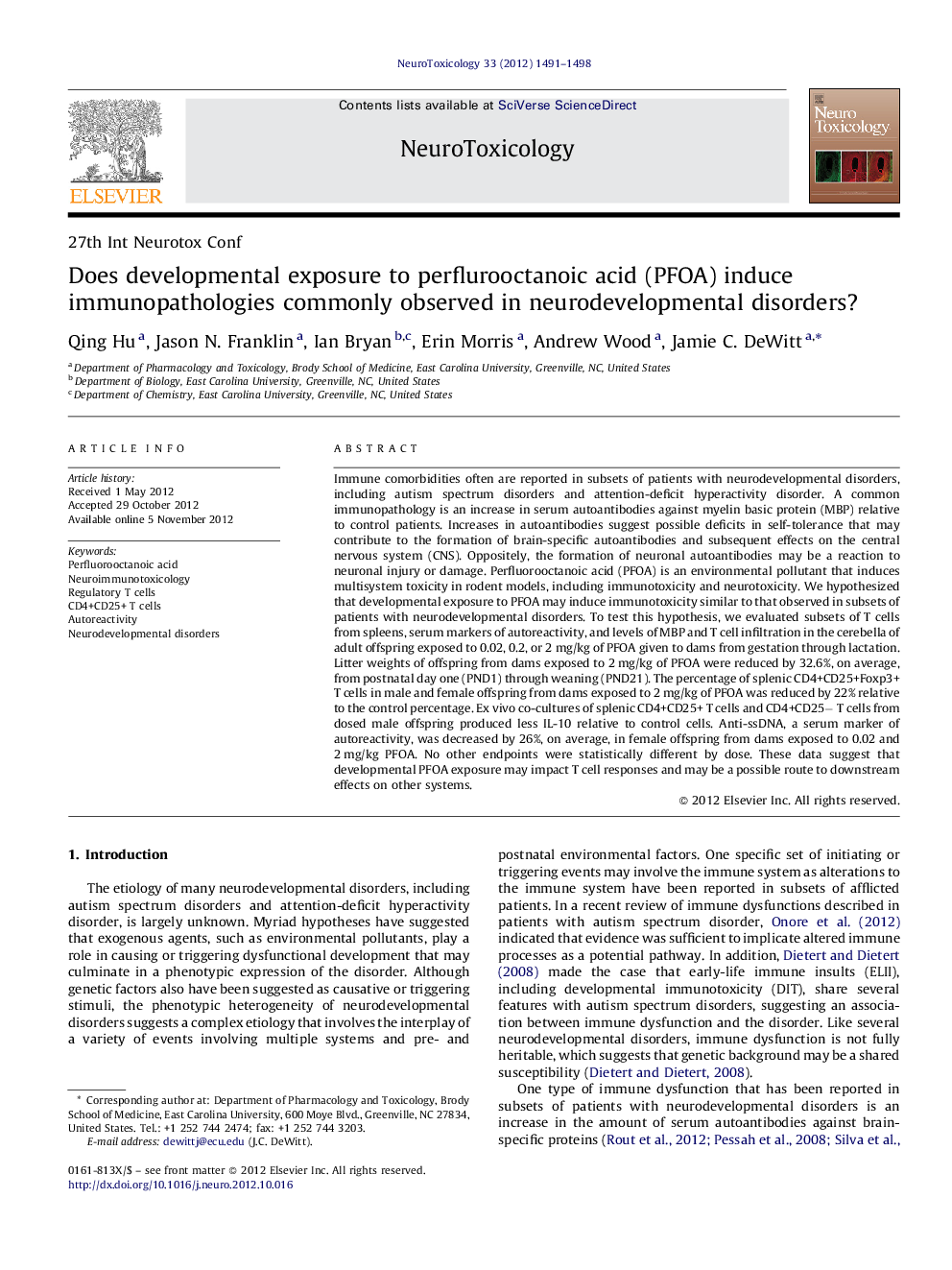| Article ID | Journal | Published Year | Pages | File Type |
|---|---|---|---|---|
| 2589912 | NeuroToxicology | 2012 | 8 Pages |
Immune comorbidities often are reported in subsets of patients with neurodevelopmental disorders, including autism spectrum disorders and attention-deficit hyperactivity disorder. A common immunopathology is an increase in serum autoantibodies against myelin basic protein (MBP) relative to control patients. Increases in autoantibodies suggest possible deficits in self-tolerance that may contribute to the formation of brain-specific autoantibodies and subsequent effects on the central nervous system (CNS). Oppositely, the formation of neuronal autoantibodies may be a reaction to neuronal injury or damage. Perfluorooctanoic acid (PFOA) is an environmental pollutant that induces multisystem toxicity in rodent models, including immunotoxicity and neurotoxicity. We hypothesized that developmental exposure to PFOA may induce immunotoxicity similar to that observed in subsets of patients with neurodevelopmental disorders. To test this hypothesis, we evaluated subsets of T cells from spleens, serum markers of autoreactivity, and levels of MBP and T cell infiltration in the cerebella of adult offspring exposed to 0.02, 0.2, or 2 mg/kg of PFOA given to dams from gestation through lactation. Litter weights of offspring from dams exposed to 2 mg/kg of PFOA were reduced by 32.6%, on average, from postnatal day one (PND1) through weaning (PND21). The percentage of splenic CD4+CD25+Foxp3+ T cells in male and female offspring from dams exposed to 2 mg/kg of PFOA was reduced by 22% relative to the control percentage. Ex vivo co-cultures of splenic CD4+CD25+ T cells and CD4+CD25− T cells from dosed male offspring produced less IL-10 relative to control cells. Anti-ssDNA, a serum marker of autoreactivity, was decreased by 26%, on average, in female offspring from dams exposed to 0.02 and 2 mg/kg PFOA. No other endpoints were statistically different by dose. These data suggest that developmental PFOA exposure may impact T cell responses and may be a possible route to downstream effects on other systems.
